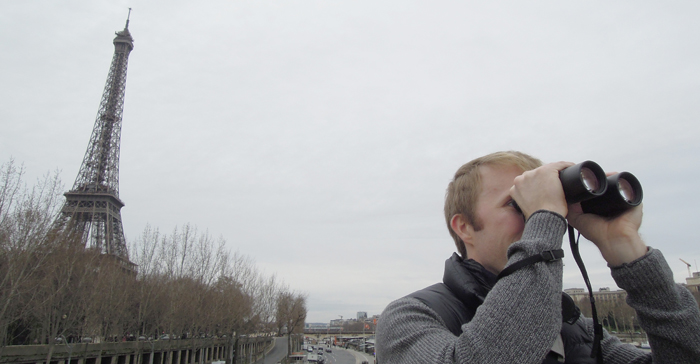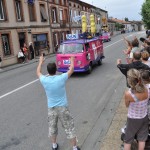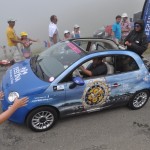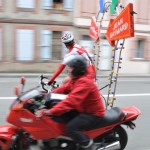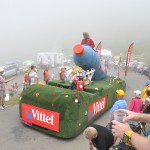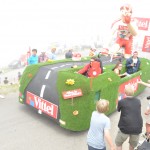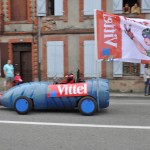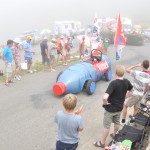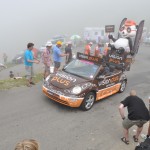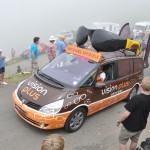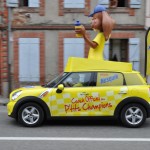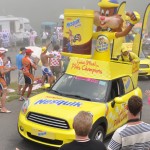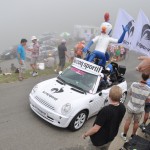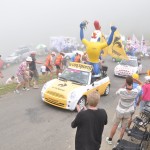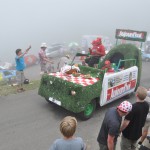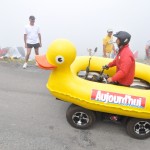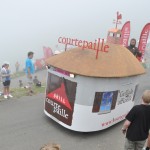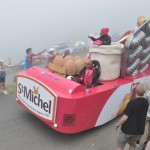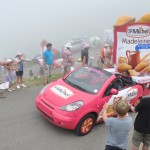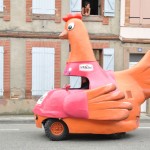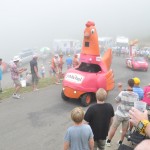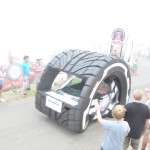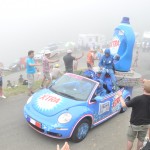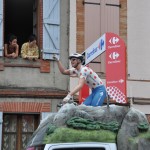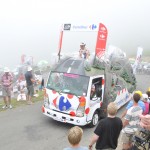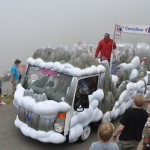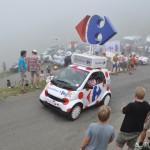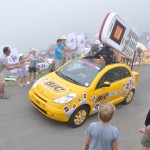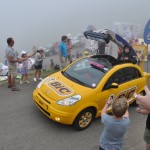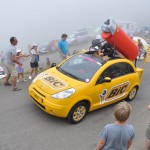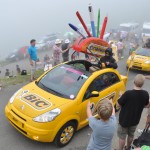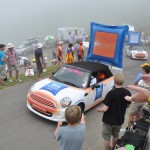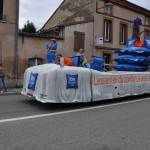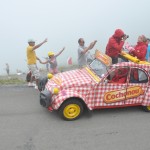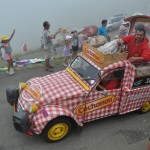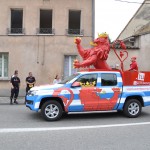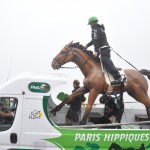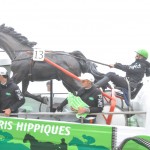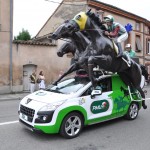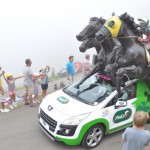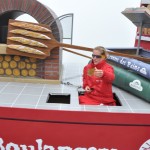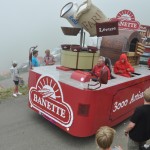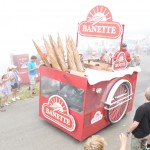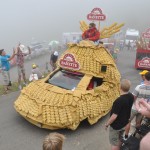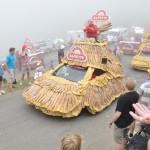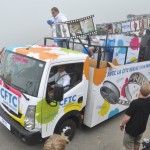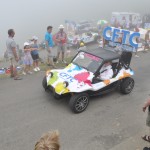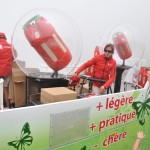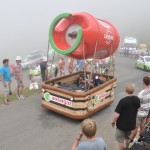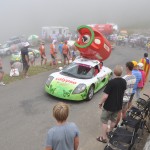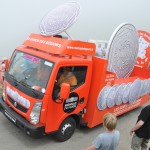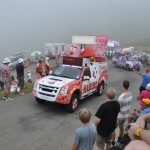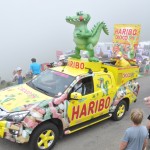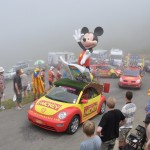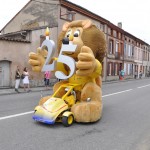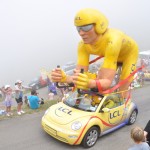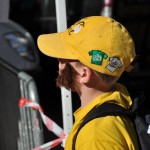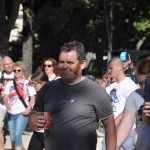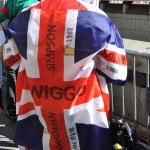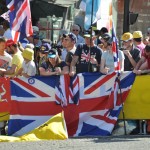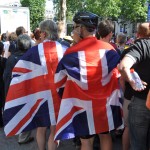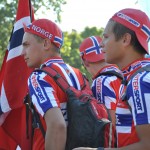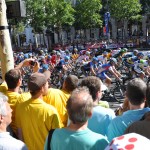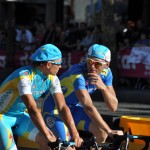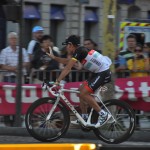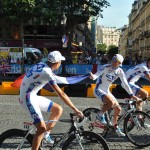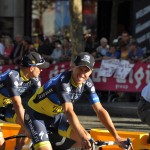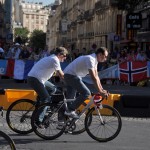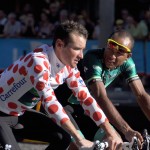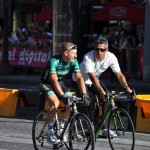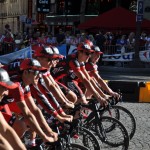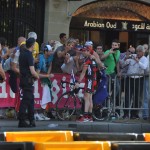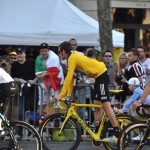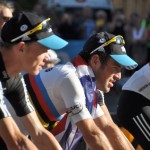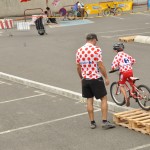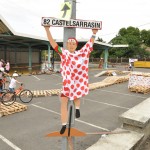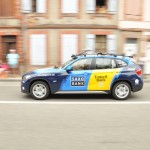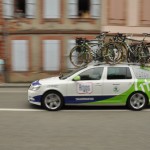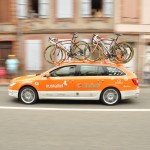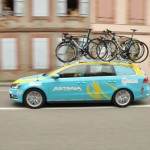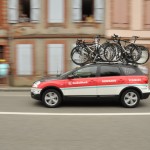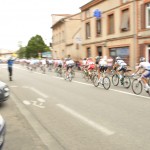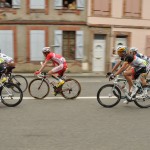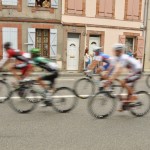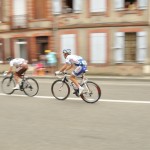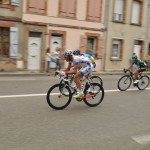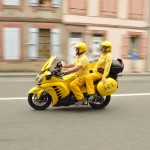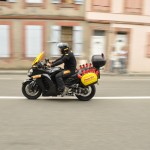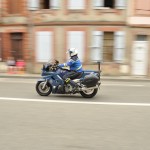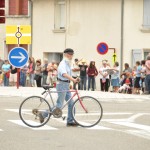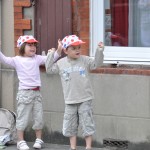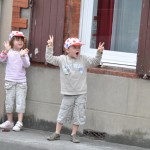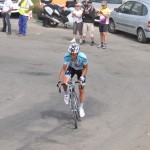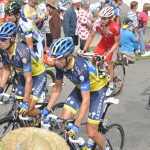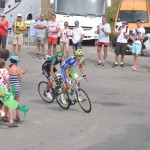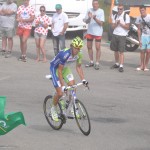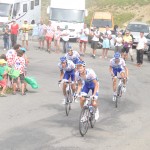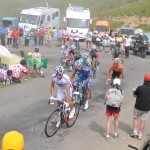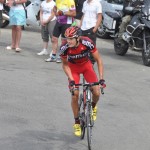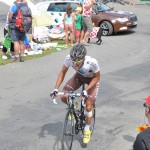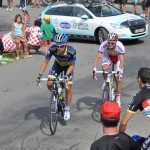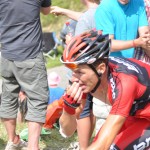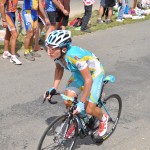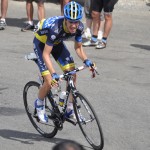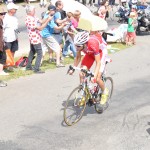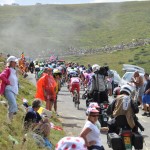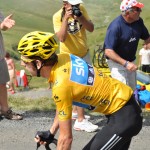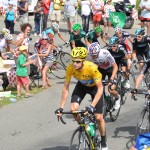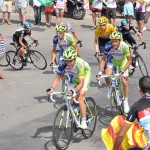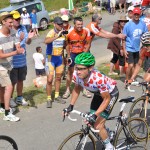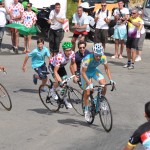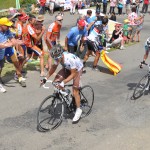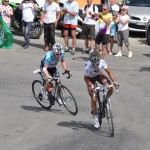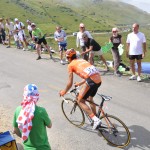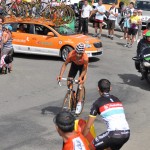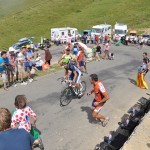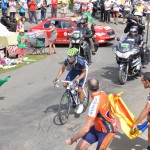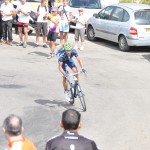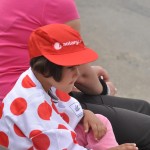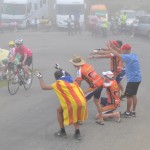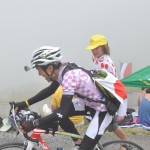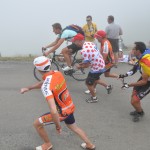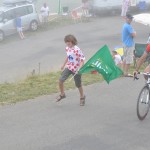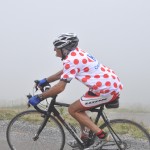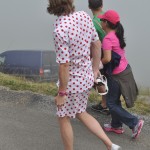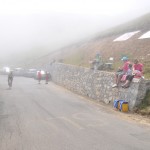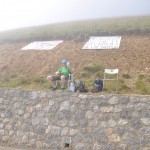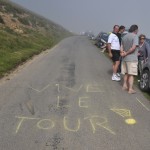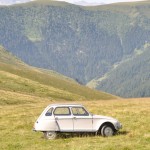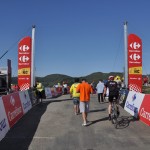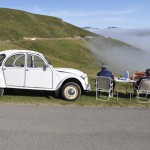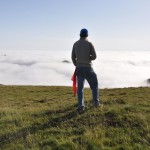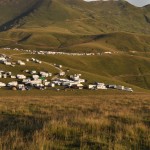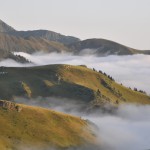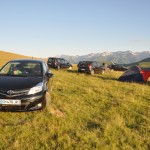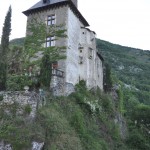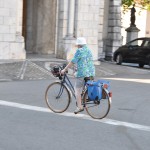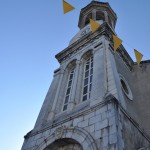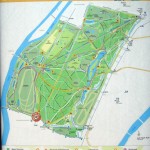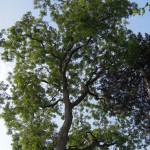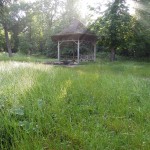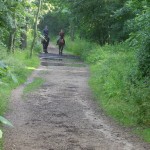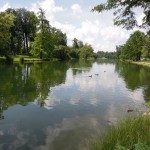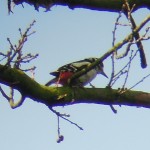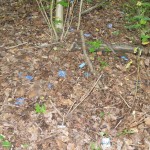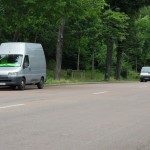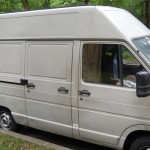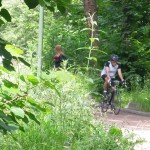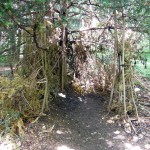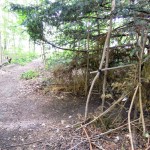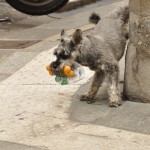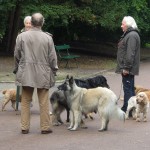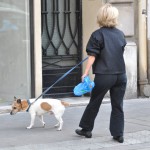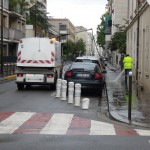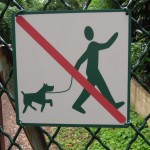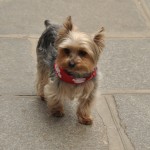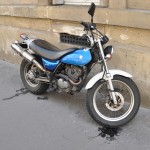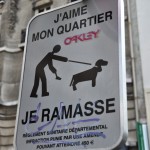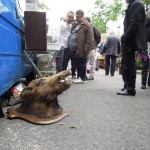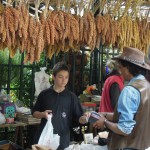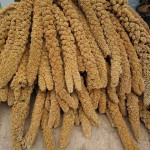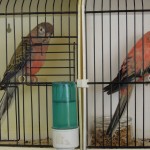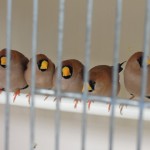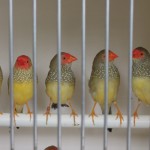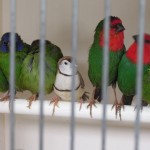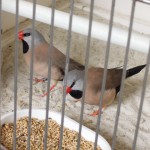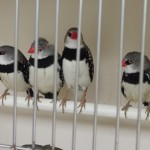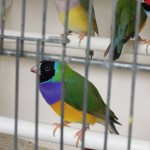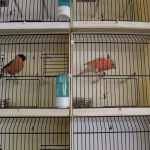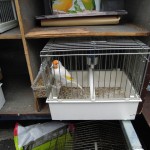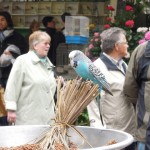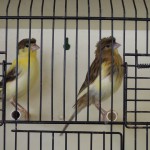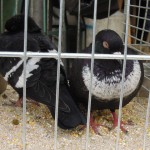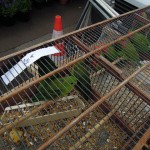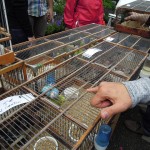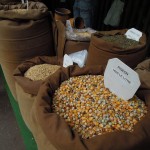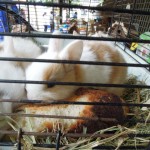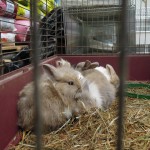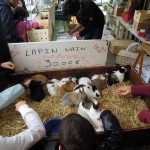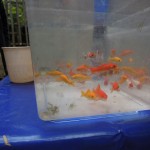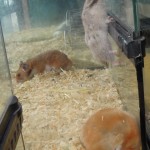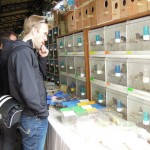No one comes to Paris for the birds. But because many European travel itineraries loop through the City of Light, birders would be well served to bring their binoculars. After perusing paintings at the Louvre and consuming sweets at the corner patisserie, take a morning and explore one of the locations outlined below. You may be surprised about what species you can find.
Look at an aerial map of Paris and, amidst the tangle of streets, you’ll note that one is never more than a couple metro stops away from a patch of green. Unfortunately for birders, most are gardens that for centures have been subjected to French landscape architects who value order and symmetry over ecology. Ultimately, avian diversity suffers.
After living in southwestern Paris for eight months, I found a handful of gems that are worth a visit.
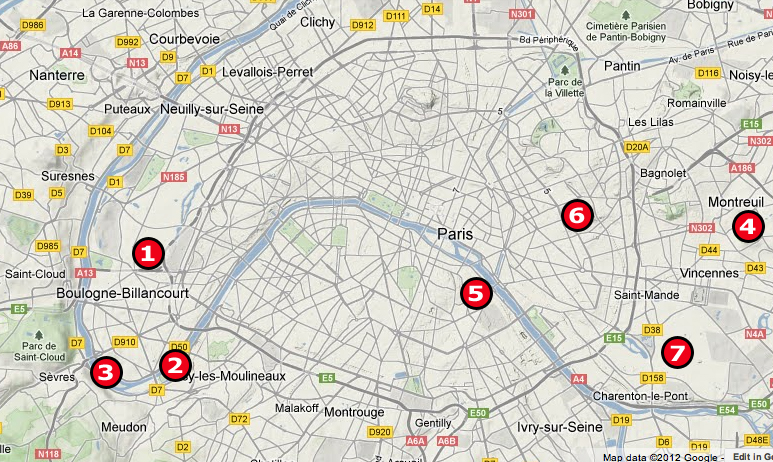
- Bois de Boulogne**
- Parc de l’Ile St Germain**
- Ile de Seguin
- Parc du Beaumonts
- Jardin des Plantes
- Cimetiere du Pere Lachaise
- Bois de Vincennes**
Parks listed in no particular order. (**) Denotes the most rewarding locations if time is at a premium.
Helpful Resources:
- Check out eBird.org to get an idea of what species are likely when (this bar chart is for all of Île de France, the prefect where Paris is located). To search to see where specific species have been reported in Paris, visit this page (currently Crested Tit) and type the species name in the top left. NOTE: resident eBirders in Paris are extremely rare so the eBird database is almost entirely dependent on visiting birders like you—please input your sightings to make this bar chart as accurate as possible.
- Fauna – Île de France is where sightings are reported by French birdwatchers. Click on one of the Les __ derniers jours links in the left nav to select reports from the last two, five, or fifteen days. Select “Lieu 75” on the next page to only display reports from Paris (Paris is located in postal district 75). Species names are in French but you can translate the page automatically if you use Google Chrome, or copy and paste the names into translate.google.com. If a report interests you, use Google or Bing Maps to find the location, but be sure to search the French version of the place name.
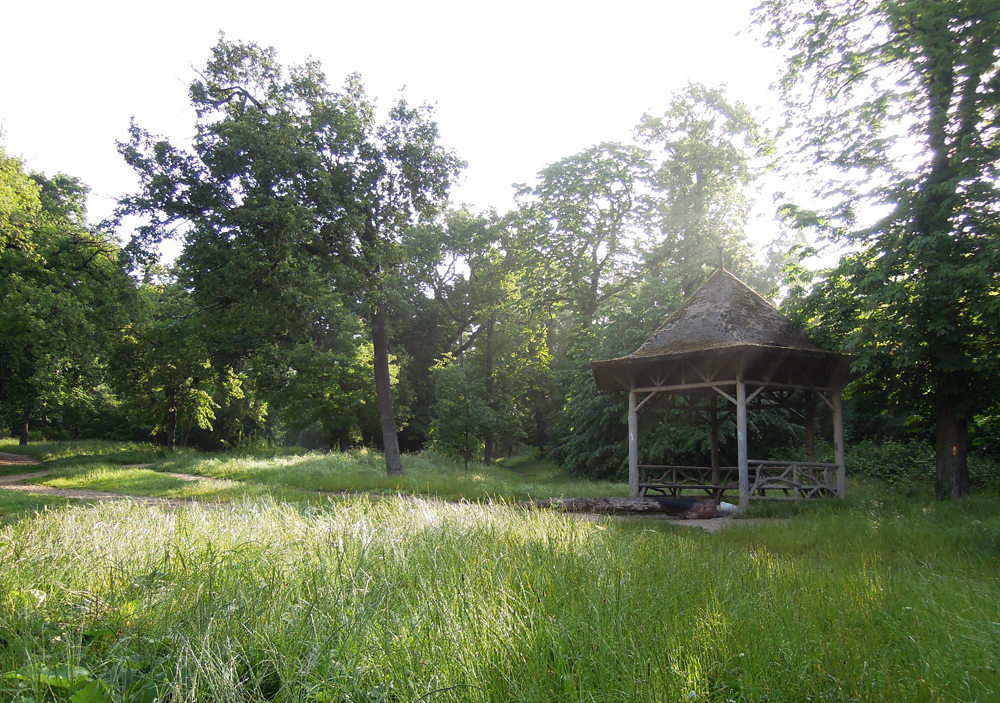
- Bois de Boulogne
If you have the time, a morning at Bois de Boulogne (literally “Boulogne Forest”) will provide a nice slice of European specialties. Located to the west of Paris, Bois de Boulogne is located just outside the circular peripherique highway that defines the borders of Paris. It’s 2.5 times the size of New York’s Central Park and offers unmanaged habitat complete with undergrowth, mature trees and snags—a refreshing change from the manicured gardens located on the inside of the highway.
Best opportunities exist in the Parcours Sportif, a 3km exercise trail in the southeast corner of the park. Habitat is relatively open—especially the eastern half—allowing easy viewing of the mature deciduous tree canopy. Check snags for Greater Spotted or Green Woodpeckers—the more numerous woodpecker species—but keep an eye out Middle-Spotted and Lesser-Spotted Woodpeckers as well. Chasing down a pecking sound revealed a Black Woodpecker on one August morning. Early spring is the best time to chase woodpeckers as territorial males start to drum on still leafless trees.
While looking for woodpeckers, listen for Common Chiffchaff, Eurasian Nuthatches, and Short-toed Treecreepers. Mixed flocks of tits are likely throughout the park, including—in order of abundance—Great, Eurasian Blue, Long-tailed, and Marsh. Crested Tits can be found in the conifer trees that line carless Avenue de Saint-Cloud that runs north-south down the middle of Parcours Sportif. This is also a good spot for Goldcrests.
The ample undergrowth hold many of the likely suspects, including European Robin, Eurasian Wren, Song Thrush, Eurasian Blackbird, Blackcap, Common Chiffchaff, and Willow Warbler. Firecrest are possible during migration; check blackbird flocks for Redwing in winter as well as tree tops for Mistle Thrush and Fieldfare.
Scan the skies for passing raptors like Eurasian Sparrowhawk and Eurasian Kestrel, but chances are passing silhouettes will belong to the ubiquitous Common Wood-Pigeon (but check for the smaller Stock Doves).
Birding doesn’t get your pulse racing? Stop at one of the numerous exercise stations to do some quick chin-ups or dips. In addition to joggers, this area is also popular with dog owners. Most dogs are off-leash and wander freely—sometimes in large spirited packs—but, like their owners, nearly all will choose to ignore you.
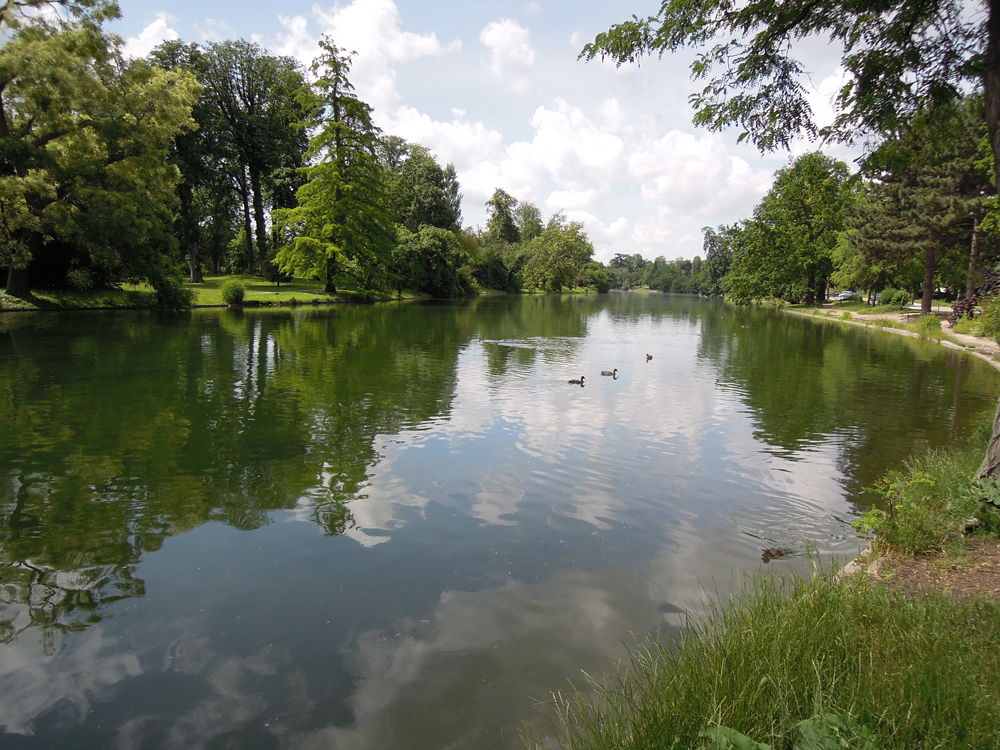
From the Parcours Sportif, walk north to Lac Inferior and Lac Superior. The water’s edge is neatly manicured so don’t expect too many marsh birds, but Eurasian Coot, Mallard, Mute Swan, and Eurasian Moorhen are easily spotted. Scan out over the open water for Common House-Martin and Barn Swallow in spring and summer.
See a full species list for Bois du Boulogne on eBird.
Still not ready to go back to the city? The Bois de Boulogne offers hundreds of miles of trails into largely forested habitat and will increase your chances of spotting species mentioned above and others, especially during migration. Réserve Ornithologique at the intersection Allée de Longchamp and Route de la Grande Cascade offers intriguing habitat with a blind complete with educational signage, but several late morning visits yielded little. The nearby lakes and surrounding habitat are worth a wander; an off-trail stand of conifer trees provided great studies of a flock of Goldcrests and a pair or Eurasian Bullfinches in June.
Be forewarned that it is quite easy to get turned around in this labyrinth of trails. A GPS-enabled smartphone will be the biggest help but if you don’t have access to data. The widely used Paris Pratiqué street map has a page dedicated to Bois de Boulogne but for a more detailed view, take a picture of one of the large maps with your phone that greets visitors as they enter the park. This image will help orient you when you come across one of the many thoroughfares that criss-cross the park, many of which are well-marked. A compass is also a big help.
As you explore the trails, be mindful that visiting the edge of any major drivable thoroughfare may bring you face-to-face with the less reputable side of this natural area: prostitutes. Lone men wandering the woods may attract attention, but a quick flash of your binoculars should dispel any questions about the intention of your visit. Visit during the daytime and your safety won’t be an issue.
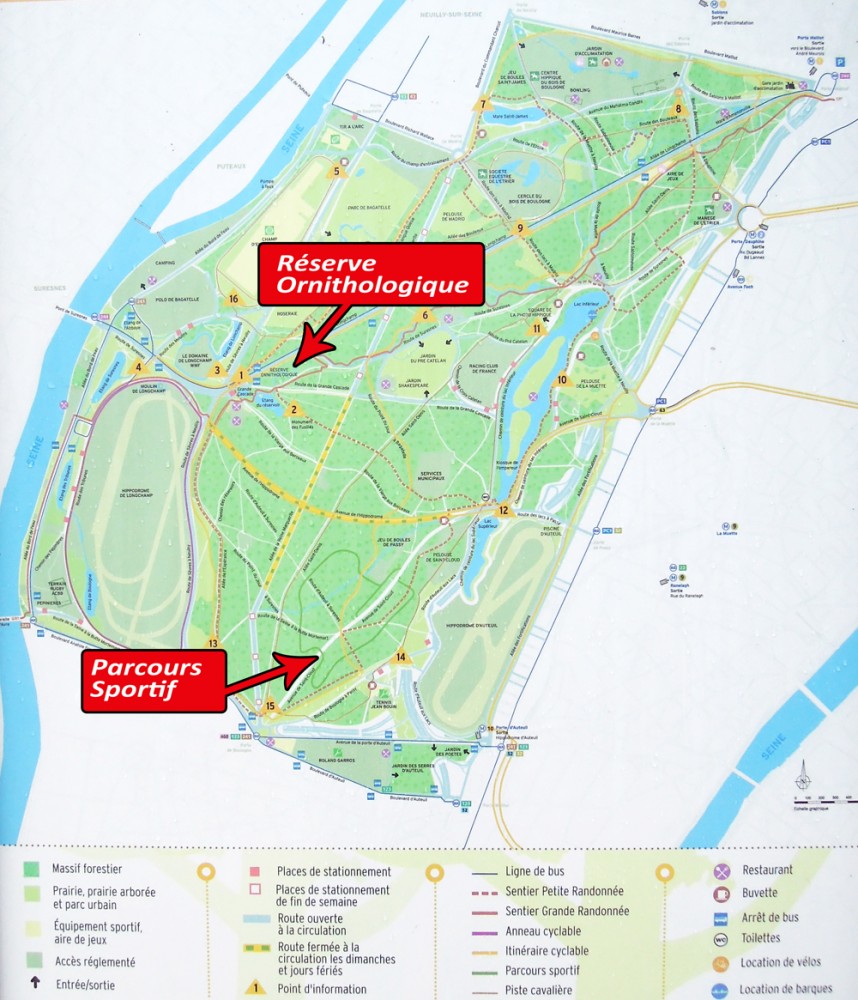
Directions: Take the Line 10 Metro to the Porte d’Auteuil stop. Walk west on Avenue de la Porte d’Auteuil. You can cut in to the park at numerous locations, but to get to the parcours de sportif, continue on Avenue de la Porte d’Auteuil, passing Roland Garros (home of the French Open) on your left. Upon arriving at the large traffic circle, take a sharp right up the carless Avenue de Saint-Cloud. Good habitat exists on either side of the road, but the parcours trail run parallel to the road after about 0.25 mile on the right side of the road. For easy access, continue on Avenue de Saint-Cloud until the six way intersection, and take a 90 degree right to access the trail(s).
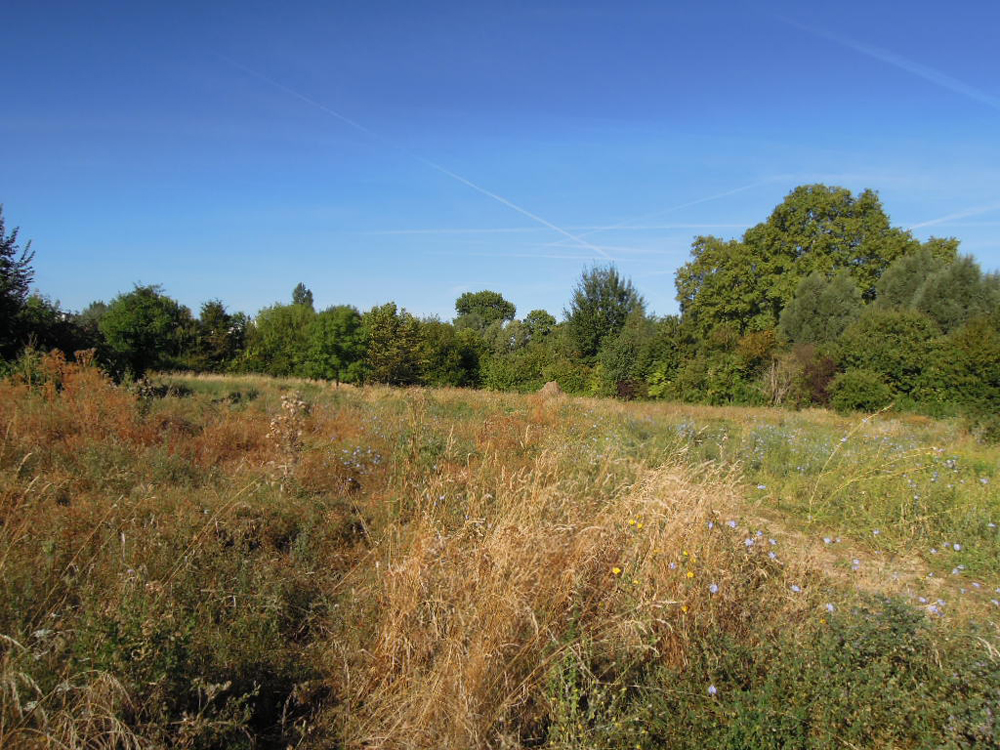
- Parc de l’Ile St Germain
If you find yourself in the south—and maybe slightly west—of Paris, it’s worth a stroll over the bridge to Parc de l’Ile St Germain, even for non-birders. Surrounded by the river Seine, Ile de St. Germaine (“St Germain Island”) is almost entirely public park. The eastern half of the park contains an equestrian center, a restaurant, and an oddly painted monolith—the unlikely lovechild of a nascent Picasso and an overzealous cement mixer—perched on top of a hill overlooking some playfields.
If you seek birds, make tracks to the western end of the park, also accessible from Boulevard des l’Iles from Pont de Billancourt (“Billancourt Bridge”) to the west. The secret gardens nestled amongst stone ruins are worth a few photos, but the nearby grasslands—and possibility for goldfinches and serins—may distract birders. That natural habitat will improve as you continue west to a very small wetland at the far western edge of the park—the most productive area for birding in the entire park, especially during migration. Eurasian Blue, Great, and Long-tailed Tits, Eurasian Nuthatch, Short-toed Treecreeper, Eurasian Magpie, Common Chafffinch, Eurasian Jay, and Eurasian Blackbird are possible year-round; look for Greater Whitethroat, Spotted Flycatcher, and Pied Flycatcher in migration. Scanning the skies can yield Common Wood-Pigeon, Black-headed Gull, and Great Cormorant.
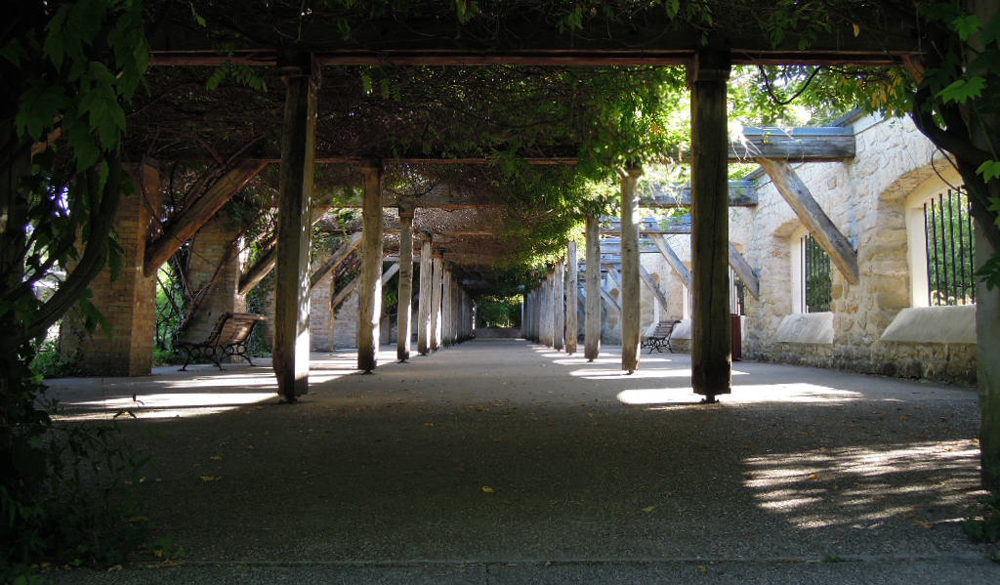
One November morning, a small stand of alders about 50 meters east of the ponds brought one Lesser Redpoll in with a small flock of European Goldfinches to feed. In winter, also look for European Serin and Eurasian Siskin in this area. Mistle Thrush, Redwing, Song Thrush, and Fieldfare are all possible amidst the swelling winter population of Eurasian Blackbirds. Eurasian Bullfinches can be found in the fruiting trees nearby.
As with most bird-watching, morning is best.
Directions: Take Line 9 Metro to Pont de Sevres, exiting at Porte de St-Cloud. Walk south on Georges Lafont for about 0.5 mile. Take a right on Bd de la Republique. After a few blocks, you will cross the Seine on Pont d’Issy (be sure to be on the south side of the road). The park entrance will be on the right. The best birding habitat is on the far side of the park.
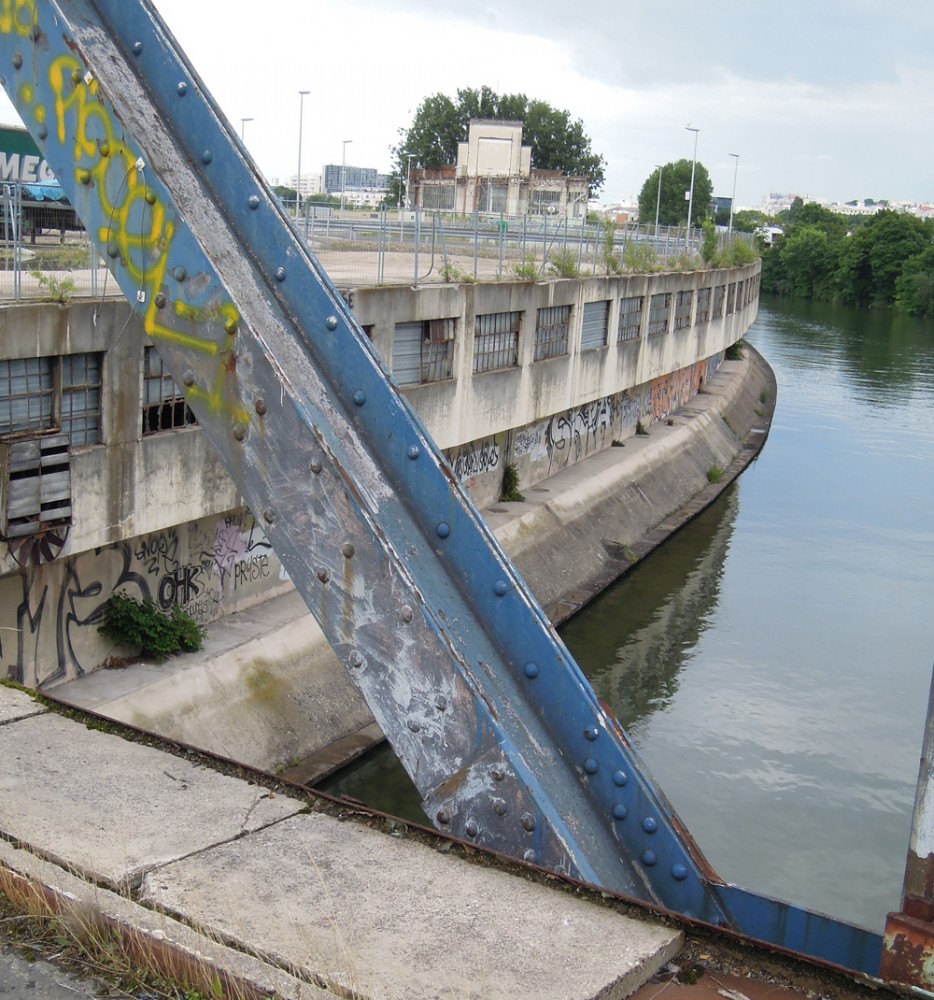
- Ile de Seguin
Another island on a southwestern stretch of the Seine, Ile de Seguin is a newly-constructed park reclaimed from the remnants of a defunct Renault factory. Busted windows near the water’s edge and reinforced cement entryways are vestiges of the islands industrial past, built in 1934 with the last car rolling off the production line in 1992. The buildings were finally demolished in 2005. Don’t expect a diversity of habitat at Ile de Sequin: it’s covered by a thick shrub that, I suspect, was planted because of its tolerance for industrial toxics that likely remain in the soil. Bring your binoculars, however, just in case the Little Ringed Plovers seen during construction in 2012 remain. European Goldfinches and European Serins are possible year-round and outlying trees and shrubs should attract migrants in spring and fall. Black-headed Gulls are reliable on the river: Common Terns possible in migration.
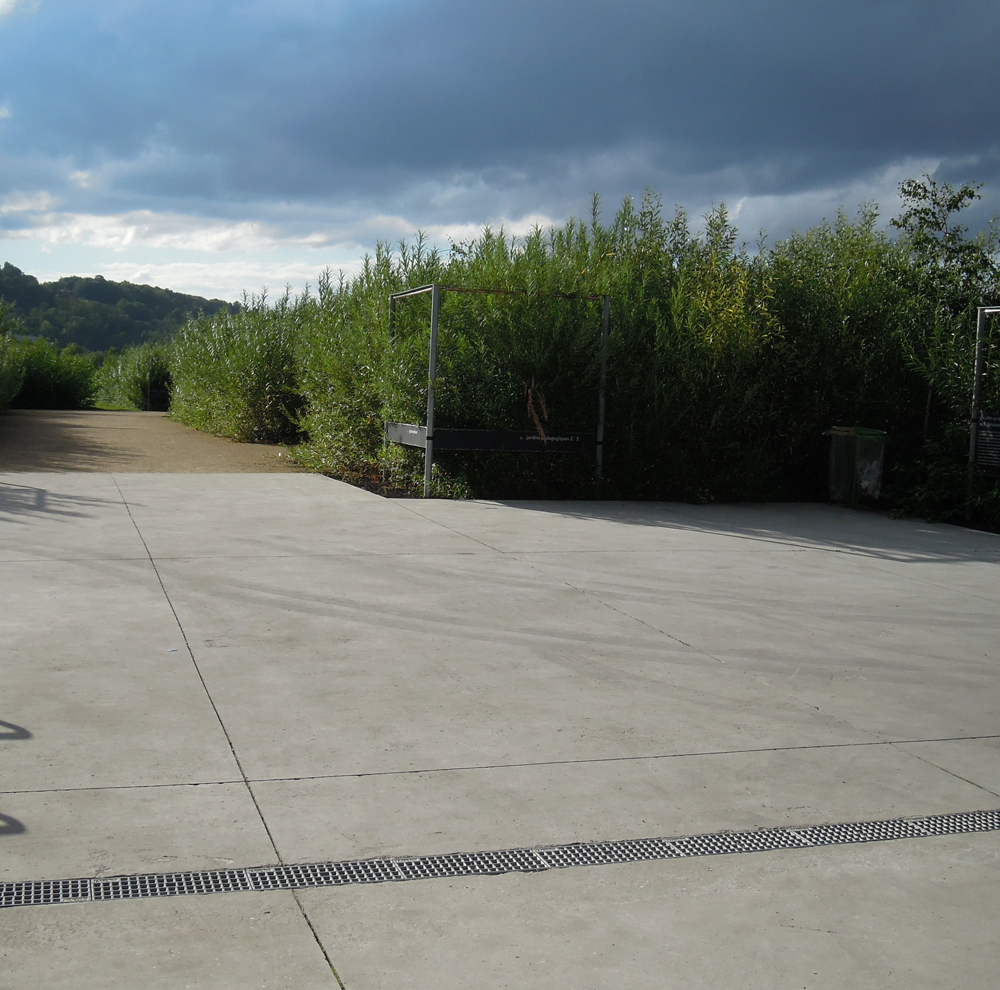
Directions: Take Line 9 to the last stop: Pont de Sevres. The island is visible from the Pont de Sevres bridge but you need to walk south and east along the river to access the new (modern-looking) passenger footbridge. The path continues to the left to exit the island via an older bridge on the other side (which a birder needn’t explore).
- Parc du Beaumonts
Parc du Beaumonts is a small hill on the outskirts of NE Paris (Montreuil) with a deciduous forest at its base and overgrown habitat with scrub and grass—even a pond—at its modest summit, the highest point in the area. It may be a bit out of the way, but this raised forest—in a sea of apartment buildings—is a magnet for passing migrants in August/September and April/May. Visit in the morning to scour the treetops and the summit for a slough of possible passerines otherwise difficult to find in Paris. Return in the afternoon to perch on the parks berm to scan the skies for passing raptors, with Eurasian Hobby and Honey Buzzard possible.
Parc du Beaumonts is the stomping grounds of British expat birder, David Thorns, who, with a regular cadre of birders, tally 120+ species a year. Check his blog for recent sightings.
Directions: Take Line 9 all the way to the end, Marie de Montreuil. Follow Avenue Walwein east for several blocks before it takes a soft right and continues as Rue Galilée. At the T-intersection, take a right onto Avenue Jean Moulin. After two blocks, the entrance to the park will be on your left.
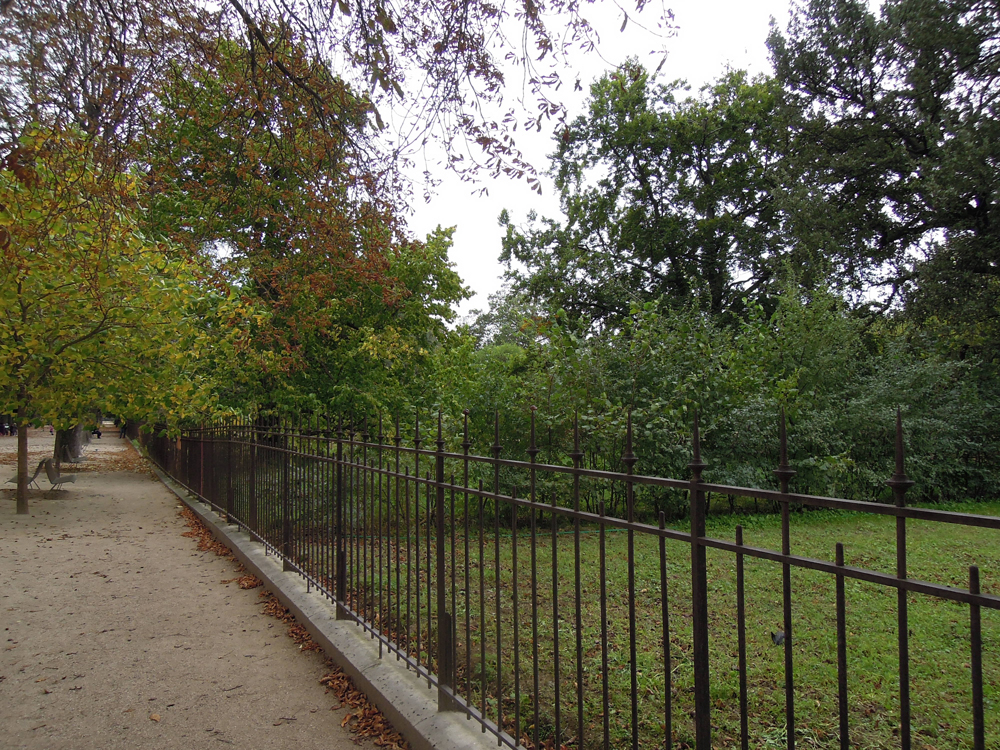
- Jardin des Plantes
Located in the fifth arrondissement across Gare d’Austerlitz, the Jardin des Plantes is the flagship botanical garden in France. For the plant enthusiast, there are numerous demonstration gardens, a rose garden, separate greenhouses for both Mexican and Australian plant species, and an alpine garden with 3000 species from around the world. Nature enthusiasts will enjoy the four museums on site (Paleontology, Entomology, Mineralogy, and the Grand Gallery of Evolution) as well as the world’s oldest zoo, created in 1795 with animals brought from the royal menagerie at Versailles.
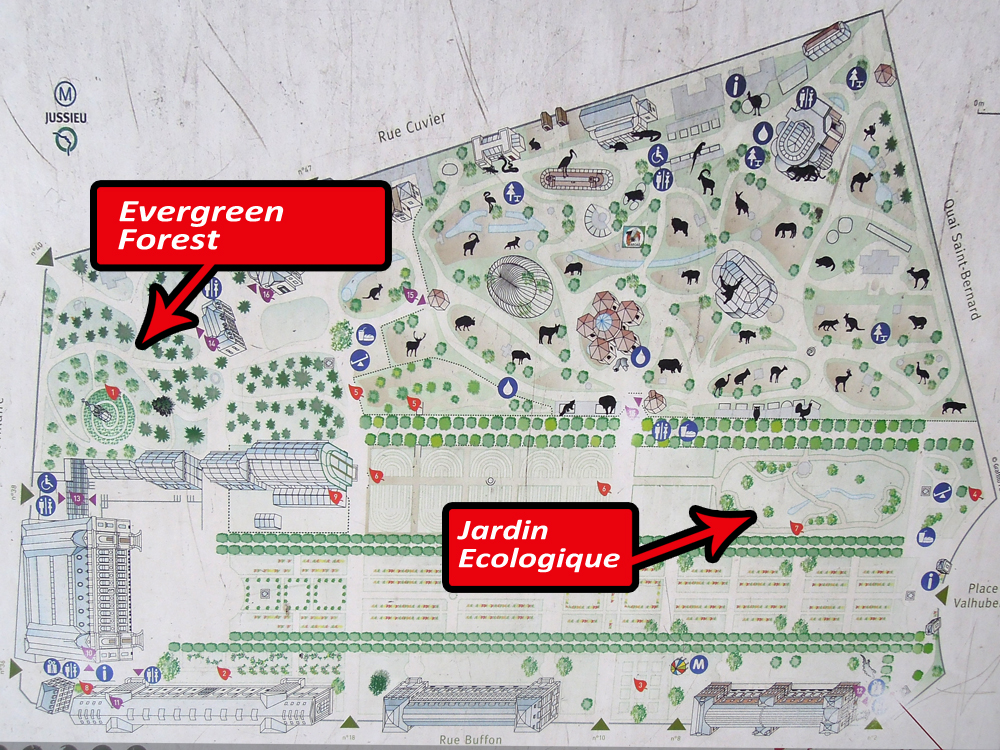
For the birdwatcher, much of the gardens are maintained in the traditional French style—a symmetrical statement of man’s ability to control nature. Wander the gardens and you’ll quickly find Eurasian Magpie, Eurasian Jay, Common Wood-Pigeon, Carrion Crow, European Starling, Great Tit, and Eurasian Blue Tit.
The Jardin Ecologique offers the most promising habitat within the park with trees of varying heights, snags, and undergrowth. This area is only accessible 11:00am-12:30pm by guided tour (€4) but almost all of it is viewable from the perimeter (although this path is packed with joggers in the morning). Look and listen for Eurasian Nuthatch, Short-toed Treecreeper, Eurasian Wren, Blackcap, European Robin, Dunnock, Common Chiffchaff, Long-tailed Tit, and Eurasian Blackbird.
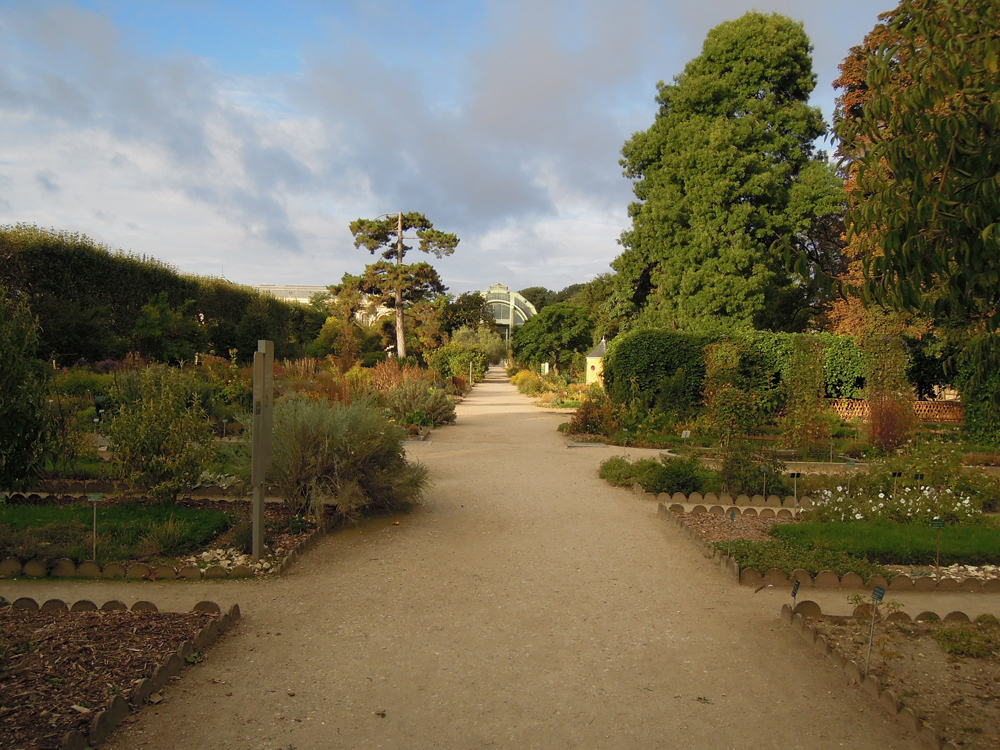
As you move west in the park, you may be able to see a (captive) Eurasian Eagle-Owl in a zoo enclosure to your right. Keep on eye out for European Greenfinch and Eurasian Moorhen in the gardens to your left and listen for Rose-ringed Parakeet, a recent addition to the park list whose population is increasing in Paris.
Finally, the evergreen forest is tall and lacks an understory but it should yield additional opportunities for treecreepers, blackbirds, and the aforementioned tits, as well as Goldcrest, and possible Song Thrush.
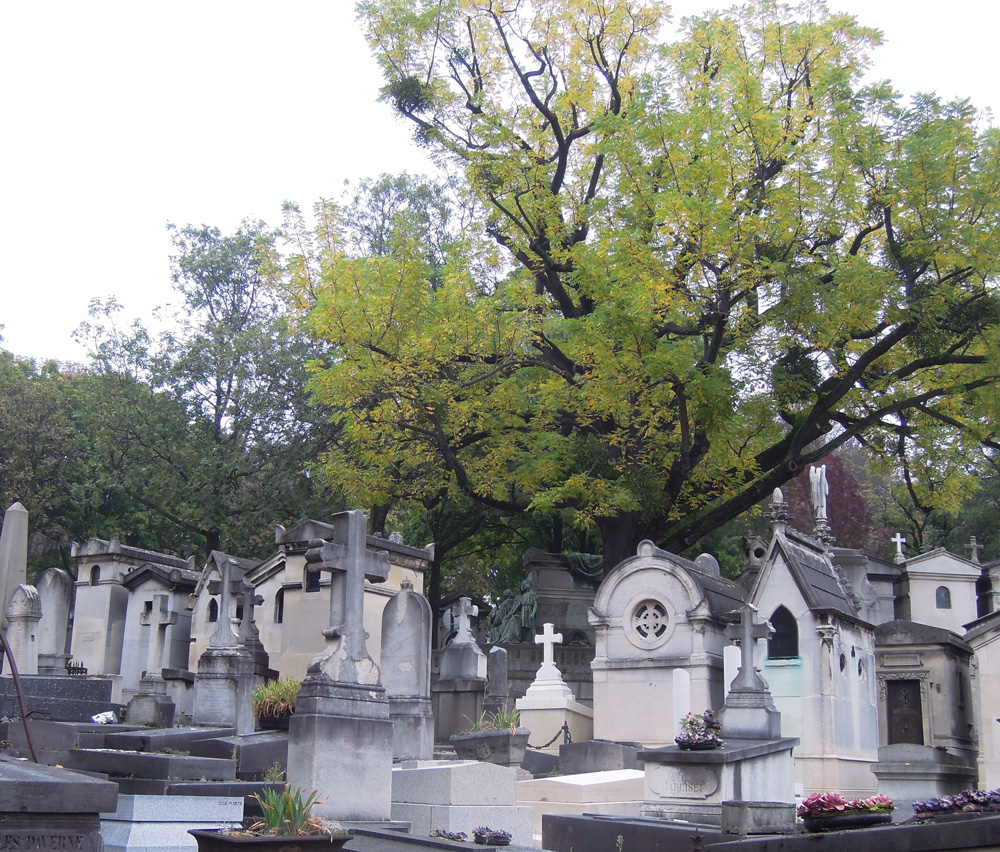
- Cimetiere du Pere Lachaise
Cimetiere du Pere Lachaise (“Pere Lachaise Cemetery”) is a popular tourist attraction located in the 20th arrondisement on the east side of Paris. Over 100 acres of beautiful old trees greets visitors to this historic landmark, but birders shouldn’t expect the undergrowth that makes ideal bird habitat: that area is occupied by thousands and thousands of gravestones and crypts dating back to the early 19th century. That doesn’t mean you should keep your binoculars in the hotel room; the trees can get quite thick in some sections and the raised hill at the south end of the park can attract passerines in migration.
The more common species in Paris abound, including: Common Wood-Pigeon, Great Tit, Eurasian Blue Tit, Eurasian Jay, Eurasian Magpie, Carrion Crow, Short-toed Treecreeper, Eurasian Blackbird, and European Starling.
The call of a Great Spotted Woodpecker could be heard anywhere, as well as Eurasian Nuthatch. Scour the numerous flocks of tits for less numerous Coal Tit. Look for flocks of European Greenfinch feeding on seeds of conifer trees. To find some of the only underbrush in the cemetery, head to the roundabout with the tomb of Casimir Perier (1777-1832) and find the small trails uphill to the north, paralleling Avenue des Accacias. Listen for Eurasian Wren and European Robin.
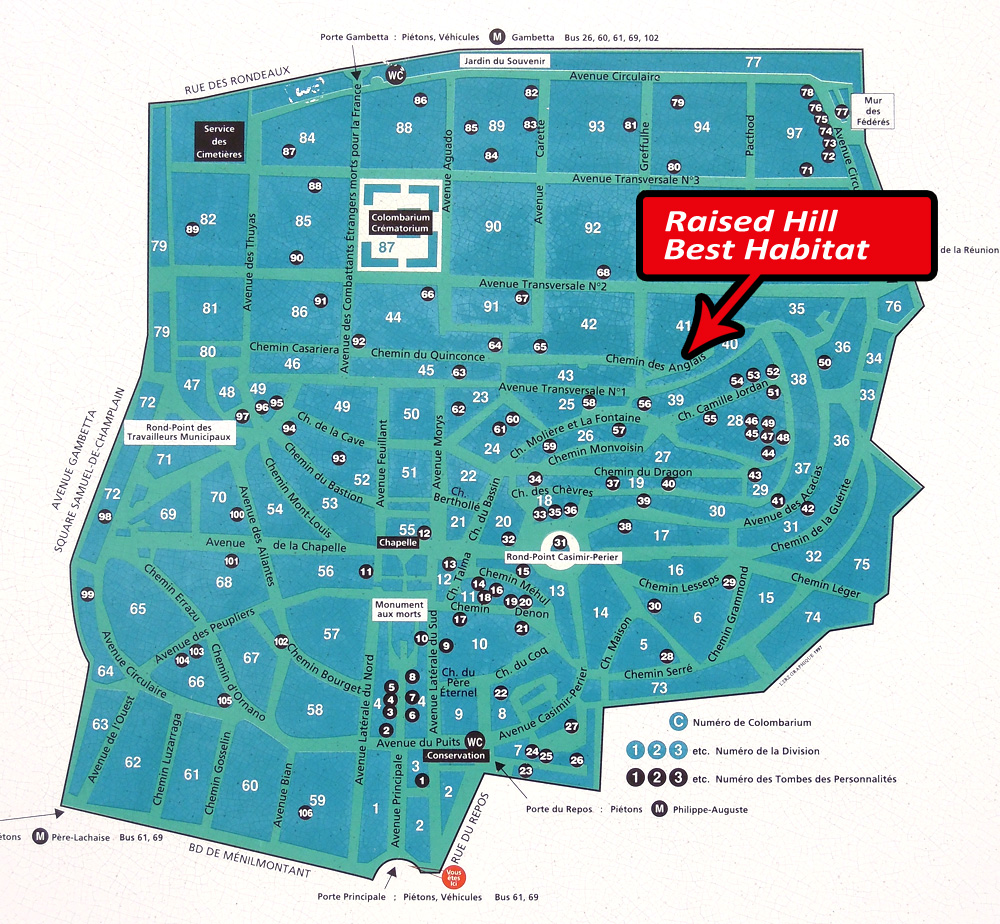
Work your way up the trails to scour the trees for passerines during migration. A trip in mid-October yielded a large flock of Firecrest, numerous Common Chiffchaff, several Song Thrush on the fruiting conifers, a handful of Blackcap, a European Pied Flycatcher, and a fly-by Eurasian Hobby.
Once you’ve packed away the binoculars, return to the entrance to look at the map of famous residents, including Oscar Wilde, Frederic Chopin, and Jim Morrison.
Bois de Vincennes
The 2,500 acre Bois de Vincennes comprises the eastern half of the “green lungs of Paris.” If the pace of the city and the noise of its urban arteries have grown tiresome, retreat to this tangle of trails threading through this impressive expanse of untamed deciduous forest. Prefer stylized greenscapes and the sightlines of a dramatic park avenue? Bois de Vincennes will also satisfy; it even has a lake or two.
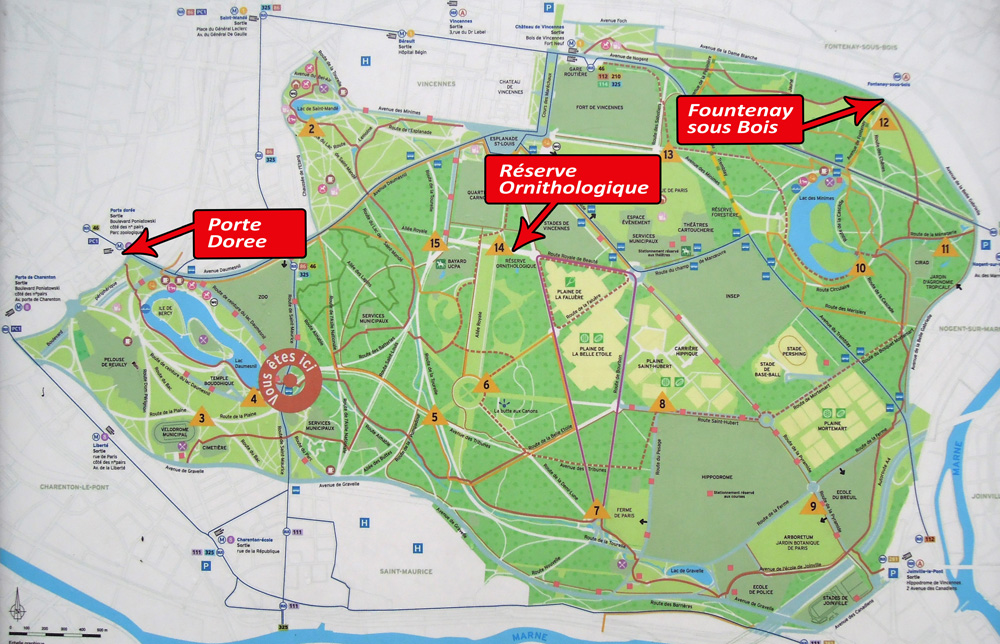
Enter from the Port Doree Metro station and walk the edge of Lac Daumesnil. Joggers will be present at every hour of the day, more so on the weekends. Move west and the packs of aerobic junkies—and the urban din—will fall from memory.
The lake hosts a large gaggle of Canada Geese. Sort through the flocks to find a resident Barnacle or Bar-headed Goose or a flock of Ruddy Shelducks. All are introduced and therefore uncountable to listing purists, but still worth a study. The lake also supports Black-headed Gull, Gray Heron, Great Cormorant, Mute Swan, and Mallard but also check for migrating waterfowl. The island, accessed from a bridge near the Buddhist temple, can be a good place to find migrants like Song Thrush and Firecrest in migration and Rose-ringed Parakeet year round.
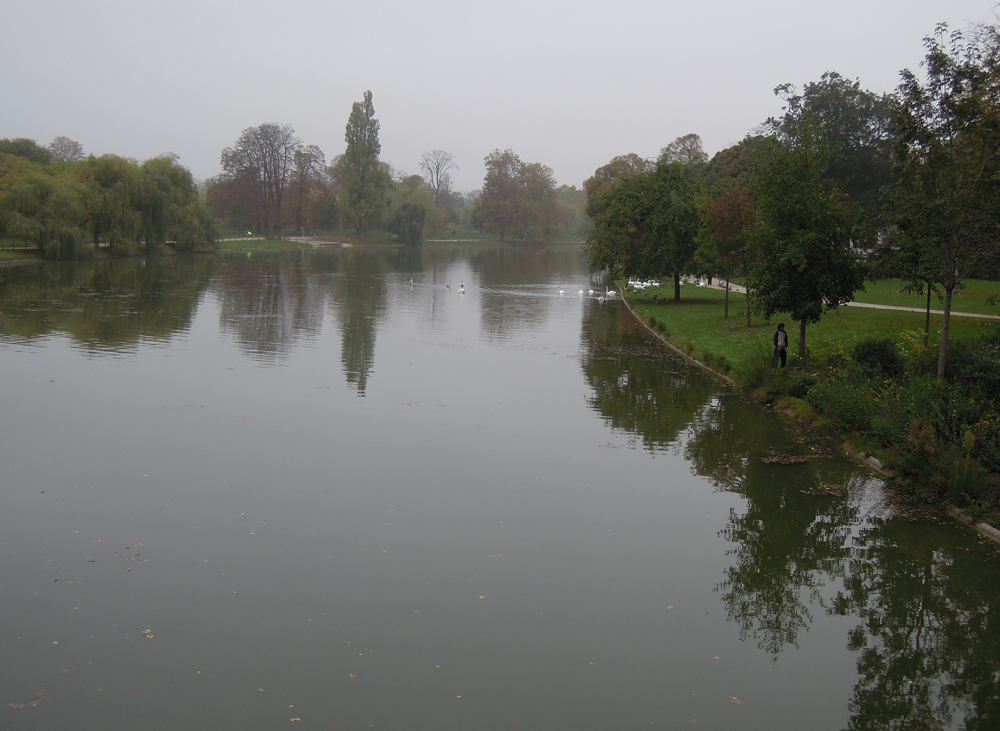
The brushy area south of the lake is a good place to scan for Dunnock, Eurasian Greenfinch, and Common Chaffinch. In winter, look for increasingly scarce Eurasian Tree Sparrow and Cirl Bunting. Keep an eye open for patrolling Eurasian Kestrels. As you move further east, you’ll find more deciduous trees and a greater likelihood of seeing forest birds like Eurasian Jay, Eurasian Wren, European Magpie, Goldcrest, Short-toed Treecreeper, Common Chiffchaff, Eurasian Nuthatch, European Robin, European Blackbird, and Song Thrush. Expect passerine numbers and diversity to increase during migration throughout the park. Nearly all the tit species are possible, including Great, Eurasian Blue, Long-tailed, Willow, and Crested (with Coal in migration and winter). Great Spotted, Lesser Spotted, and Green are the most likely woodpeckers, but keep an eye out for Middle Spotted and Black Woodpeckers, which you’ll be hard-pressed to find within city limits. Mistle Thrush is possible year round, but look for wintering Redwing and Fieldfare in open areas.
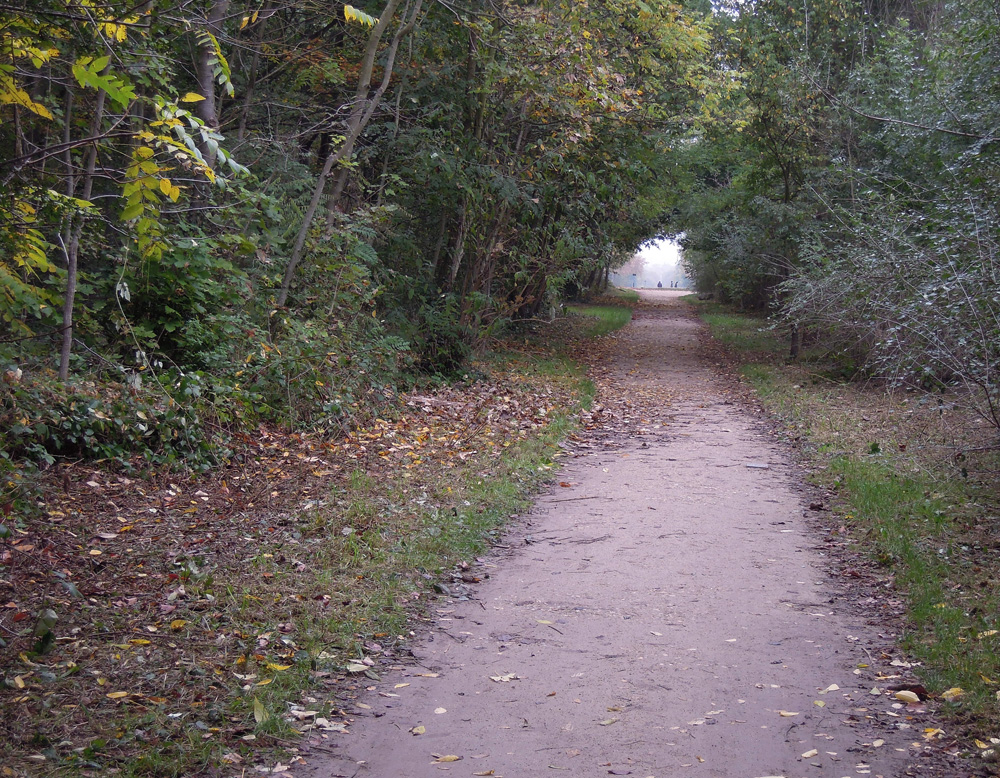
Access the park from Fountenay sous Bois RER station to walk around Lac des Minimes for a chance of Common Pochard in addition to many of the water birds mentioned previously. There are numerous trails in the area, but stick near a couple of the streams for a chance at Common Kingfisher.
Your chances to see any or all of the above species will increase as you cover more ground, but take care not to get too lost. A rudimentary map is a must if your smartphone doesn’t have a roaming data plan—a compass is also helpful. If and when you find a map display board, take a picture for future reference on the trail. All trails are flat and neatly maintained.
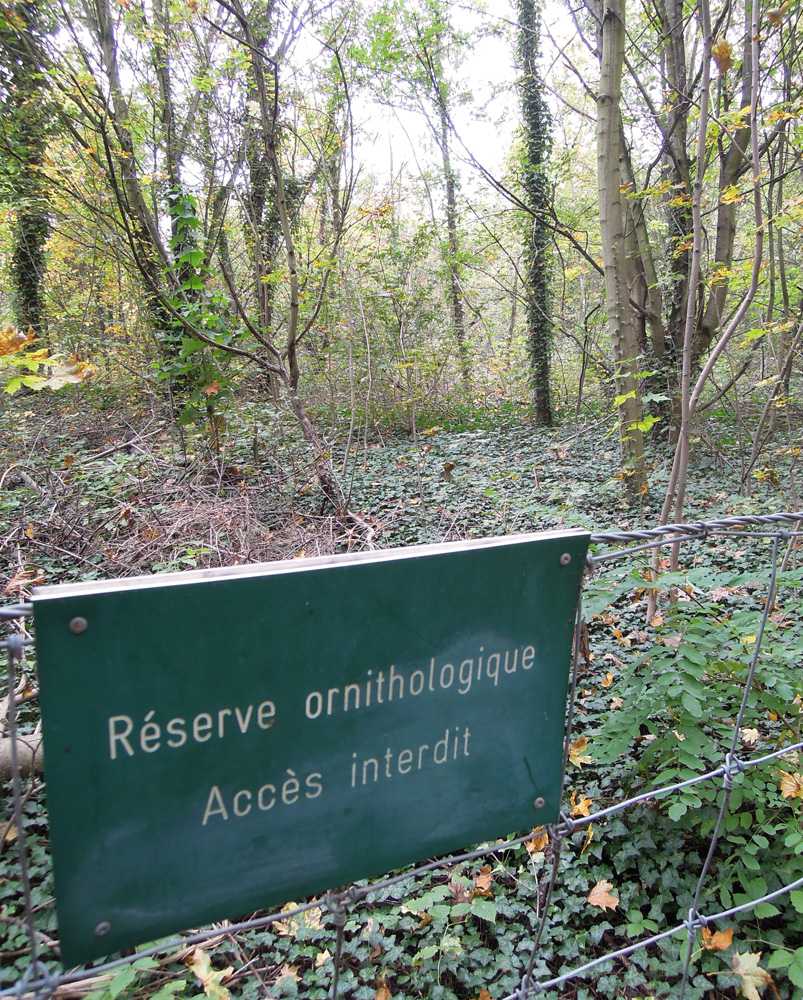
The so-called Reserve Ornithologie (located near the intersection of Allee Royale and Route Royale de Beaute) is worth a stop but don’t expect different habitat, just a fenced perimeter that, while impeding access for careful observers, protects valuable underbrush.
To depart, head north to visit Chateau de Vincennes, a hunting lodge for numerous French kings dating back to Louis VII in the 12th century.
As I continue to explore and discover vegetated Parisian nooks worthy of your binoculars, I will report them to this page. If you have any additional suggestions, please let me know by leaving a comment!
